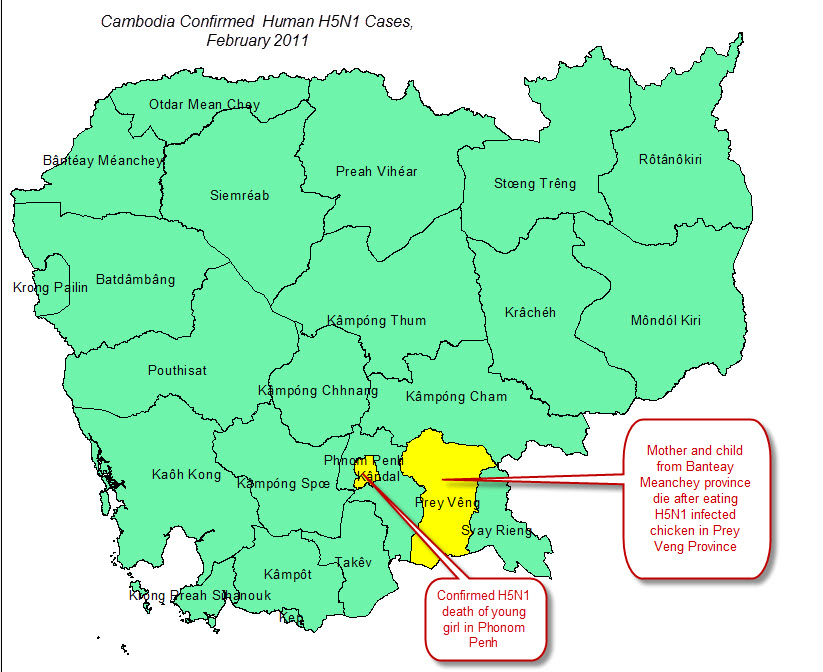How Dangerous is Bird Flu (H5N1) to Global Public Health?
The reports of three confirmed human cases of H5N1 in Cambodia (see map below) provides an opportunity for discussing H5N1 as an influenza virus with the potential to start another global pandemic. This thread provides an opportunity to comment and speculate on how such a pandemic might occur, its virulence and mortality rate, treatment, collateral damage, etc.
General map of Cambodia showing the locations of this week's confirmed human H5N1 cases.

The reports of three confirmed human cases of H5N1 in Cambodia (see map below) provides an opportunity for discussing H5N1 as an influenza virus with the potential to start another global pandemic. This thread provides an opportunity to comment and speculate on how such a pandemic might occur, its virulence and mortality rate, treatment, collateral damage, etc.
General map of Cambodia showing the locations of this week's confirmed human H5N1 cases.

Comment